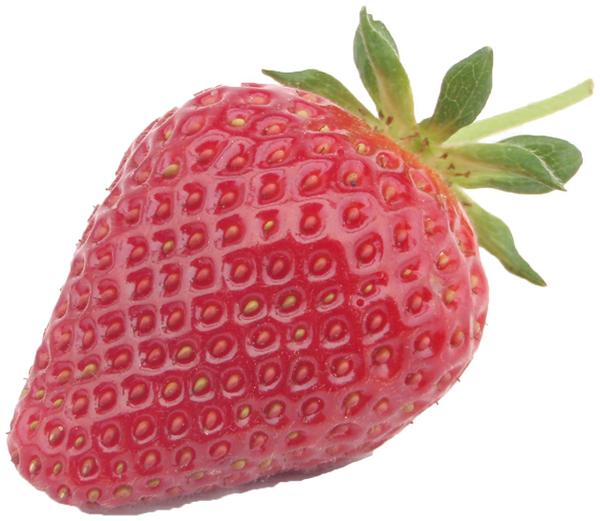Biology
Whiteflies are small insects, about 1 – 2 mm (0.04 – 0.07 in) in length, that feed mainly on the underside of plant leaves. Adults have four wings covered with a white, waxy coating and are held tent-like over the rear body when resting. Immature whiteflies are sessile nymphs with roundish bodies, later 4th instar stages have waxy filaments protruding from the body that give a hairy appearance. Although they do not have true pupae, the fourth instar undergoes metamorphosis inside the last nymphal casing. For greenhouse whitefly, this “pupal” casing appears cylindrically raised with waxy filaments protruding from the flat top margin. Samples will likely need to be confirmed with an expert for accurate diagnosis.
Some of the whitefly species found on strawberries include:
- Greenhouse whitefly - Trialeurodes vaporariorium (Westwood)
- Iris whitefly- Aleyrodes spiroeoides Quaintance
- Strawberry whitefly - Trialeurodes packardi (Morrill)
Damage to Strawberries
Whiteflies are piercing, sucking insects that can cause strawberry leaves to turn yellow. Whiteflies excrete concentrated honeydew sugars as a by-product of feeding, which at high infestation levels can cause stickiness and promote growth of black sooty mold. Greenhouse whiteflies, iris whiteflies (Aleyrodes spiroeoides) and the strawberry whitefly (Trialeurodes packardi) are known to utilize strawberry as hosts. Greenhouse whiteflies can vector several crinivirus diseases of strawberries, including: Strawberry pallidosis associated virus (SPaV) and Beet pseudo yellows virus (BPYV). Other crop hosts of BPYV include cucurbits as well as a wide range of weedy species. Both criniviruses can cause disease symptoms such as reddening of older leaves, root stunting, poor development and fruit yield reduction.
Management
Cultural Control
Because whiteflies may feed on multiple plants, removing host crops before planting strawberries can help prevent populations from colonizing newly planted plants.
Biological Control
Biological control agents such as parasitoid wasps can be purchased and can be helpful in greenhouses or enclosed systems. These small stingless wasps, Encarsia formosa and Eretmocerus spp., will search efficiently and utilize whitefly nymphs for development. Practices that encourage other natural enemies such as big eyed bugs (Geocoris), pirate bugs (Orius), and lacewings will also help reduce whitefly populations.
Chemical control
Conventional
Insecticides currently provide good control of whiteflies, but monitoring is important determine population density. Yellow sticky card traps can be hung in greenhouses, and leaf turn counts can determine presence on plants.
Organic
Organic materials such as oils and soaps can be used if needed, but should be combined with cultural practices and biological control.
For commercial recommendations in North Carolina see the North Carolina Agricultural Chemicals Manual. If out of state please check with your local extension agent.
More Information
Publication date: March 19, 2014
N.C. Cooperative Extension prohibits discrimination and harassment regardless of age, color, disability, family and marital status, gender identity, national origin, political beliefs, race, religion, sex (including pregnancy), sexual orientation and veteran status.

